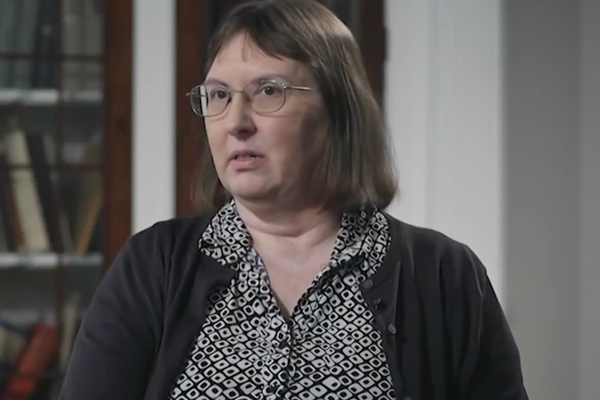
Nine days after the USMNT were eliminated from the 2024 Copa América at the group stage, head coach Gregg Berhalter was fired.
Berhalter’s dismissal was the correct, if easy, way forward for the national team after a poor showing. But any review of this summer’s failing must be broader than one coach. Questions about the quality of the current squad are fair, but there is another potential culprit: the pay-to-play model.
The notion of paying to play is prevalent throughout youth soccer in the US – and is nothing new. Nor is the contention that the model is hurting the game’s development in America, from the grassroots right through to the senior international teams.
After the USWNT were eliminated from the 2023 World Cup at the earliest stage in their history in the competition, fingers were pointed at the coach, squad and the exclusionary model that may harm youth player development.
The term ‘pay-to-play’ essentially refers to the often exorbitant fees required of the parents and carers of young people participating in organized youth sports. In soccer, youth clubs can typically cost families thousands of dollars a year with coaching costs, administration fees and travel expenses. Clubs in California have a sticker price ranging from $1,000 to $10,000 a year.
It has long been suggested by those who oppose pay-to-play that the system is too restrictive; that to breed a healthy soccer culture within the US and, ultimately, capture the best talent for the national teams, more children need to have access to the sport.
“Unfortunately the model, I believe, is getting worse in soccer than when I played competitive soccer [growing up],” Alex Morgan said in 2019. “It’s a very inexpensive sport and the fact that we’ve made youth soccer a business is, I think, detrimental to the sport.”
A study by the Sports and Fitness Industry Association in 2018 found that more than 70% of children within the pay-to-play system came from households who earned more than $50,000 a year; 33% came from households making more than $100,000 a year.
According to the US Census Bureau, the median household income in the US that year was $61,937. But that figure dropped below $50,000 in seven states. The USCB survey also found that Hispanic households had a median income of $51,404, while for Black households the average was $41,511. And within homes where the householder was under 25, the median income was just $33,389.
“I do think it is exclusionary to a degree,” former USMNT player Cobi Jones tells the Guardian. “Here in the US – and it’s not just soccer – you can’t have all these barriers to entry.
“I understand that it’s a business. And part of that business has come up over the last few decades where the pay-to-play system has established itself and it’s become very profitable for a lot of different organizations. To be honest, I think it would be difficult to root it out. You wouldn’t be able to root it out. But that doesn’t mean that you can’t have other options come in. Can something sit side by side, where you give those opportunities for people who don’t have that type of money?”
Others disagree. Ex-USMNT player Alexi Lalas is a defender of the model. “Pay to play is not ruining youth soccer,” Lalas recently wrote on social media. “Millions benefit. It’s a business catering to a market willing to pay for the product. Soccer (like piano lessons) is not an inalienable right. Free soccer costs money. Someone has to pay. So who will pay for all this free soccer?”
Jones, who is involved in projects aimed at making soccer accessible to underserved communities, doesn’t see it the same way as his former international teammate.
“You don’t want to have a situation where a good player can’t go on to play at a higher level because they can’t afford the fees,” Jones says. “There’s got to be a way that we can find to work around that so that we can always have good talent, so people that can play at higher levels have the opportunity.
“We can’t just have the philosophy that ‘Well, they’ll find us. They’ll get here somehow.’ No, that’s not going to work. If we want to get the best players, we have to be not just in certain areas within the country; we have to be in all of the areas within the county. That includes places where people do not have the money to play this game at the higher levels where it costs thousands of dollars to be in a club, hundreds of dollars for tournament fees, hotels and travel all over the country.”
The notion of a prohibitively expensive pay-to-play system is especially jarring to figures from outside the US, where such models don’t exist. In countries such as Brazil, Spain and Germany it is the game of working class, where people learn for free in streets, parks and community clubs. Speaking at the Milken Institute Global Conference in Los Angeles earlier this year, Fifa president Gianni Infantino spoke out against the US model.
“One of the things which shocked me here in America is that children have to pay in order to play,” he said. “We have to stop this. I’m Italian. I grew up in a little Swiss village in the middle of the mountains. There was a soccer team there that played in the sixth-highest division, so it was very small, and they had 23 teams.
“And this is all organized and privately funded. So the local guy who has a restaurant gives the jerseys. The lawyer who has a little bit more money spends on shoes. Privately you create this movement that makes sure that every kid plays.”
Anthony Hudson, the former USMNT assistant coach and interim head coach, was born in the US but grew up in England. When he returned to the US as a pro soccer player in the mid-2000s, he was shocked to discover how industrialized youth soccer had become.
“When I came out there in my early 20s, I found it incredibly shocking,” he says. “I started coaching in an academy in New Jersey and I quickly realized that you’re not always getting the best players from the community; it’s just the ones that can afford to play.”
And Hudson found that it wasn’t just the kids whose households couldn’t afford the fees who were detrimentally affected by the pay-to-play model; the children within the system, he felt, were put under too much pressure at too young an age.
“There’s way too much involvement from adults, whether it be parents or coaches,” Hudson says. “I’d be out walking my dogs and bump into people who’d want to talk about soccer, but the way people talk about soccer [in the US] is far too business-led and structured. I’d get into discussions about how the culture is different overseas. I never paid a penny to play football in my life growing up. That’s completely foreign to adults here.
“I’ve been in so many situations where parents ask me for advice. They tell me they’ve got this coach for their kid and they’re playing on that team, playing every weekend and training really hard. Everything is so structured; so forced. I don’t see any space for them to enjoy it. It’s too pressurized.
“The best players are made when the kids can just turn up to a pitch or an indoor court and just play.”
Hudson posits a solution. He suggests a middle ground can be found between Infantino’s description of private funding from local businesses and the kind of national subsidy found in many developed nations around the world. In England, for example, the UK government, the Premier League and the Football Association subsidize grassroots soccer to the tune of more than $1bn a year. Hudson believes it is incumbent on US Soccer and MLS to do similarly, alongside fostering community-based support systems for youth clubs and leagues.
“US Soccer and MLS have to take the lead on it,” he says. “But it’s very hard to have a countrywide mandate. I think there have to be guidelines for each state. And it needs to be community-led, where the money is coming from the local federation but also from sponsorships from local businesses; it’s more of a community push than local clubs trying to make money.
“Anyone should be able to come in and play and the level of your play should dictate what team you’re in. Nobody should be paying.”
It would be easy for US Soccer to fall into myopia with the 2026 World Cup approaching and think that a change of head coach and a tinkering of the playing roster will solve the USMNT’s problems. But if US Soccer wants to compete in the upper echelons of the international game beyond 2026, for generations to come, it will require a deeper examination of kids’ access to the sport.







